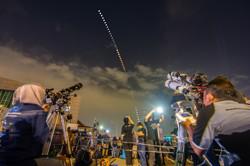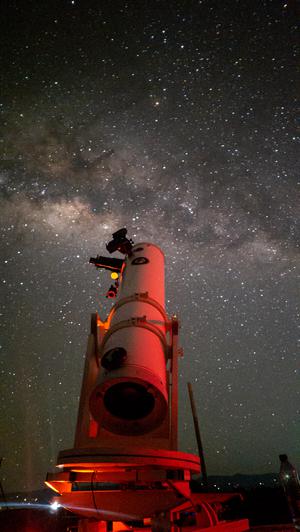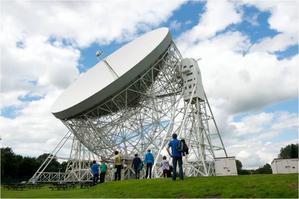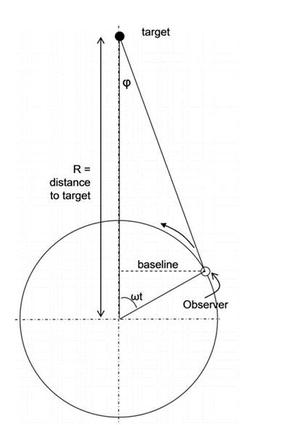Glossary term: दूरदर्शक दुर्बीण (टेलिस्कोप)
Description: टेलिस्कोप हे एक असे उपकरण आहे जे दूरच्या वस्तूंमधून फोटॉन (दृश्यमान प्रकाश किंवा इतर तरंगलांबीचे) गोळा करते आणि त्यांच्याबद्दल माहिती (उदा. प्रतिमा) निरीक्षकाला पुरवते. सुरुवातीच्या दुर्बिणीत (१७व्या शतकाच्या सुरुवातीपासून) भिंग हे ऑप्टिकल घटक म्हणून वापरले जात होते (अपवर्तक दुर्बिणी पहा). भिंग किती मोठ्या प्रमाणात बनवता येतील यानुसार मर्यादित असतात, त्यामुळे मोठ्या दुर्बिणीचा वापर करून अधिक तपशीलाने क्षीण खगोलीय वस्तू पाहण्यासाठी, भिंगांऐवजी प्रकाशाला केंद्रित करण्यासाठी आरसे (परावर्तित दुर्बिणी पहा) वापरण्यात आले. सर्वात मोठ्या ऑप्टिकल टेलिस्कोप परावर्तित दुर्बिणी आहेत. 20 व्या शतकात, इलेक्ट्रोमॅग्नेटिक रेडिएशनच्या इतर क्षेत्रांचा अभ्यास करण्यासाठी दुर्बिणींचा शोध लावला गेला, त्यामुळे आता रेडिओ दुर्बिणी, इन्फ्रारेड दुर्बिणी, क्ष-किरण दुर्बिणी इ. अस्तित्त्वात आहेत. खगोलीय स्त्रोत क्षीण असतात, त्यामुळे खगोलशास्त्रज्ञ अधिक प्रकाश गोळा करण्यासाठी मोठ्या दुर्बिणीचा तयार करतात आणि बारीक टोकदार रिझोल्यूशन गाठतात.
Related Terms:
- इलेक्ट्रोमॅग्नेटिक रेडिएशन (विद्युत चुंबकीय विकिरण)
- Infrared Telescope
- Radio Telescope
- परावर्ती दूरदर्शी
- अपवर्तनीय दुर्बीण (रिफ्रॅक्टिंग टेलिस्कोप)
- Angular Resolution
- X-ray Telescope
- Lens
- आरसा
See this term in other languages
Term and definition status: The original definition of this term in English have been approved by a research astronomer and a teacher The translation of this term and its definition is still awaiting approval
The OAE Multilingual Glossary is a project of the IAU Office of Astronomy for Education (OAE) in collaboration with the IAU Office of Astronomy Outreach (OAO). The terms and definitions were chosen, written and reviewed by a collective effort from the OAE, the OAE Centers and Nodes, the OAE National Astronomy Education Coordinators (NAECs) and other volunteers. You can find a full list of credits here. All glossary terms and their definitions are released under a Creative Commons CC BY-4.0 license and should be credited to "IAU OAE".
If you notice a factual or translation error in this glossary term or definition then please get in touch.
Related Media
The Eclipse Between Us, by Muhammad Rayhan, Indonesia
Credit: Muhammad Rayhan/IAU OAE
License: CC-BY-4.0 Creative Commons Attribution 4.0 International (CC BY 4.0) icons
Learning Nights
Credit: Juan Pablo Botero Londoño/IAU OAE (CC BY 4.0)
License: CC-BY-4.0 Creative Commons Attribution 4.0 International (CC BY 4.0) icons
Related Activities
Big Telescopes: Gravity
astroEDU educational activity (links to astroEDU website) Description: Observing what gravity is doing to the Universe
License: CC-BY-4.0 Creative Commons Attribution 4.0 International (CC BY 4.0) icons
Tags:
Experiment
Age Ranges:
12-14
, 14-16
Education Level:
Middle School
, Secondary
Areas of Learning:
Guided-discovery learning
, Interactive Lecture
, Modelling
Costs:
High Cost
Duration:
1 hour 30 mins
Group Size:
Group
Skills:
Analysing and interpreting data
, Asking questions
, Developing and using models
, Planning and carrying out investigations
The 4-Point Backyard Diurnal Parallax Method
astroEDU educational activity (links to astroEDU website) Description: Measure the distance to an asteroid with a novel technique
License: CC-BY-4.0 Creative Commons Attribution 4.0 International (CC BY 4.0) icons
Tags:
Hands-on
, Measurement
, Distances
, CCD imaging
, astrometry
Age Ranges:
16-19
, 19+
Education Level:
Informal
, Secondary
, University
Areas of Learning:
Guided-discovery learning
, Project-based learning
Costs:
High Cost
Duration:
several days
Group Size:
Group
Skills:
Analysing and interpreting data
, Asking questions
, Communicating information
, Constructing explanations
, Planning and carrying out investigations
, Using mathematics and computational thinking
How do telescopes work?
astroEDU educational activity (links to astroEDU website) Description: Let's discover telescopes and experiment simple optics
License: CC-BY-4.0 Creative Commons Attribution 4.0 International (CC BY 4.0) icons
Age Ranges:
10-12
Education Level:
Primary
Areas of Learning:
Guided-discovery learning
, Historical focussed activity
, Observation based
Costs:
Medium Cost
Duration:
1 hour
Group Size:
Group
Skills:
Asking questions













